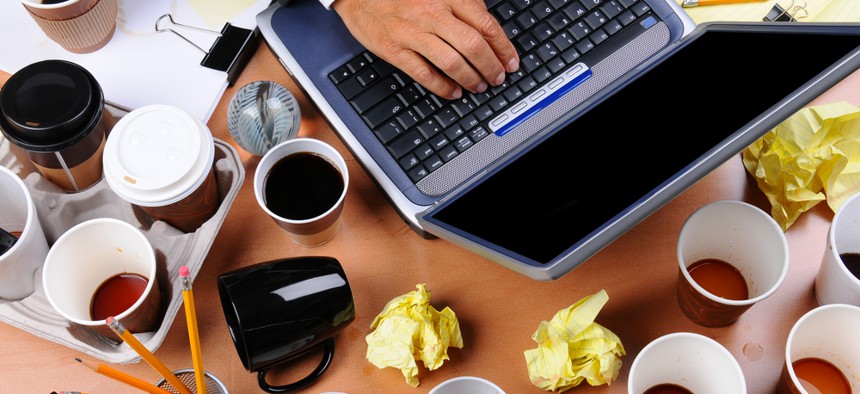Want to be More Productive? Clean Your Desk. More Creative? Trash It.
Study shows neat and tidy isn't necessarily best, the pros and cons of being organized.
A neat, orderly workspace may encourage generosity and generally “good” behavior, but a messy desk will foster your creativity. While it’s no surprise that keeping your pens lined up will make you a more efficient worker, a new study may be the first research to show that disorder can also have a positive influence on workplace behavior. Don’t go knocking your pencil holder over for the heck of it, but it seems that a little chaos might be what workers need to get their creative juices flowing.

The researchers staged three experiments, each involving two rooms that were identical save for their messiness. In the first, participants filled out a 10-minute survey before being asked to donate part of their payment for it to a charity, and were then offered either a chocolate bar or an apple on their way out. As expected, those in the orderly room were more likely to donate something—82% vs. 47%—and more likely to pick the apple. In the second experiment, researchers told participants to imagine that a company wanted to create new uses for ping-pong balls, and asked them to list up to 10 ideas. While participants in both rooms produced the same number of responses on average, the ideas from the messy room were rated as significantly more “creative” by an outside panel of two evaluators. The last experiment presented participants with a menu for smoothies and gave them a choice of three “boosts,” with the health boost labeled as either “classic” or “new.” People were more likely to go for the health boost with a “new” label when they were in the messy room, and the opposite was true for those in the clean one.
Image via Steve Cukrov/Shutterstock.com



